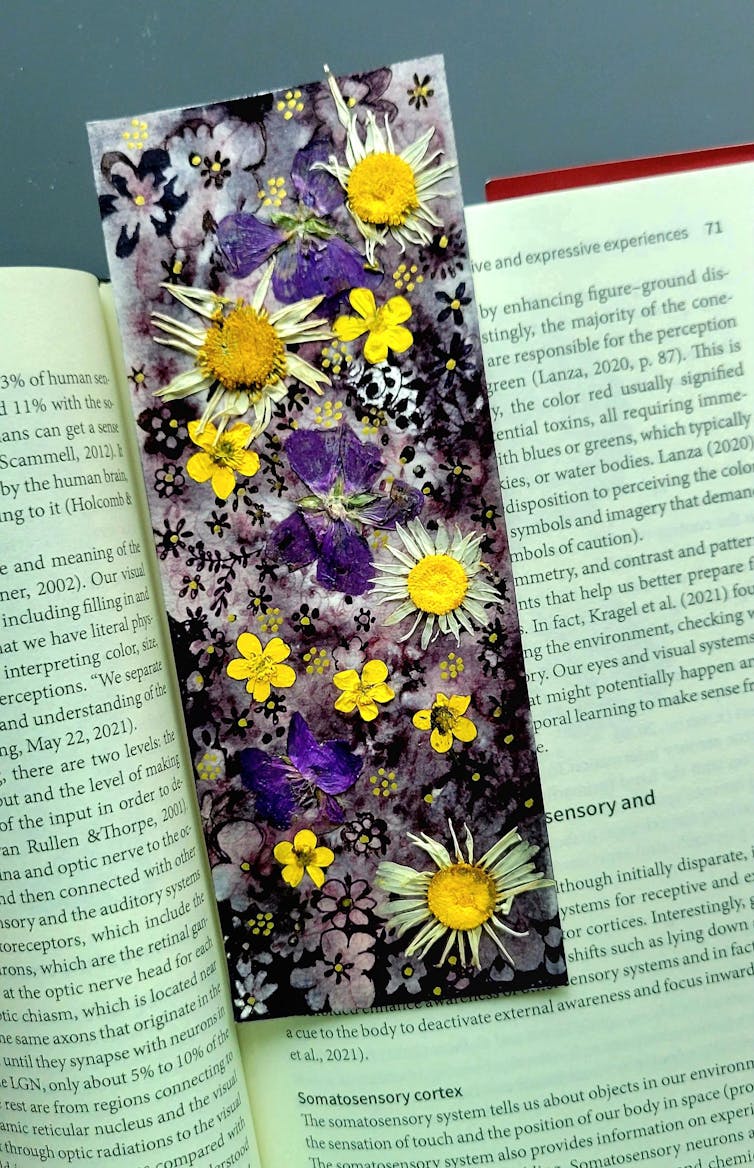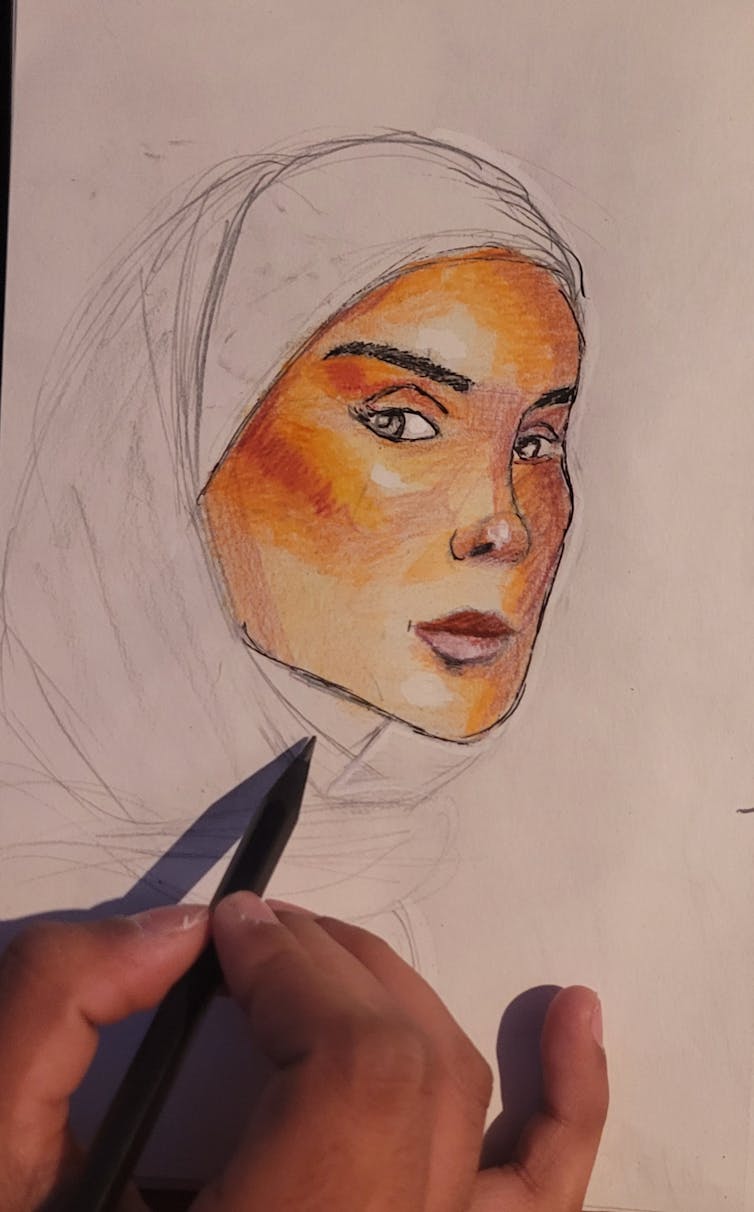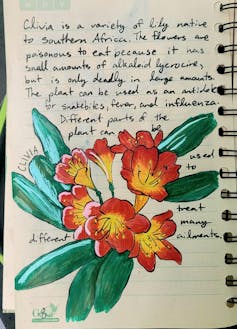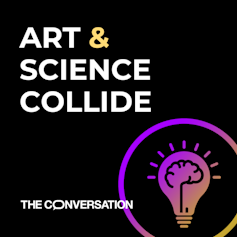When you think about the word “art,” what comes to mind? A child’s artwork pinned to the fridge? A favorite artist whose work always inspires? Abstract art that is hard to understand?
Each of these assumes that making art is something that other people do, such as children or “those with talent.”
However, as I explain in my book “The Expressive Instinct,” art is intrinsic to human evolution and history. Just as sports or workouts exercise the body, creating art exercises the imagination and is essential to mental as well as physical well-being.
I am a professor of art therapy who studies how creative self-expression affects physical and emotional health. In our clinical research studies, my colleagues and I are finding that any form of creative self-expression – including drawing, painting, fiber arts, woodworking or photography – can reduce stress, improve mood and increase self-confidence.
As a sickly child who needed to stay home from school a lot, I found that making art helped me cope. Today, creating art is my sanctuary. I use it as a sounding board to better understand myself and a way to recharge and learn from the challenges of life.

The uniquely human attribute of creativity
Although everyone has their own concept of what defines art, one thing is universally true: Creativity is a defining feature of the human species.
How so? Well, human brains are not computers processing data. They are biological prediction machines that perceive the environment through memories and the senses, with the capacity to use that information to imagine plausible future scenarios.
These inherent predictive and imaginative capacities are the wellspring of humanity’s abilities to survive and thrive – because self-expression is a safety valve that helps us cope with uncertainty. No one truly knows the future; they must live each day not sure of what will happen tomorrow. Art can help us all practice this imaginative muscle in a useful way.
In our study examining brain activity while using virtual reality tools to create 3-D digital artwork, my team demonstrated that creative expression is a natural state of being. The brain naturally uses fewer cognitive resources to be expressive and creative, compared with the brain power needed to do a rote task that requires conscious effort.
Seemingly ordinary everyday activities can provide opportunities to tap into one’s natural creativity and imagination: whipping up a meal from leftovers, figuring out an alternate route to work, dancing a little jig in response to hearing a song, or planting and tending a garden.
We have repeatedly found in our studies that even a single session of real and honest self-expression can improve self-confidence and reduce feelings of stress, anxiety and burnout.
This is partly because creativity activates reward pathways in the brain. Using our hands and bodies to express ourselves activates dopamine pathways and helps us feel good. Dopamine is a neural messenger that is associated with feeling a sense of hope, accomplishment or reward. Our brains are wired to secrete feel-good hormones whenever we move, create something or engage in any type of expressive activity.
Tapping into the creative resources within is one of the most underrated seeds of well-being in the world.
By comparison, bottling up or denying these feelings can cause distress, anxiety and fear because we have not processed and expressed them. This is probably one of the reasons why every community around the world has its own creative and expressive practices. Even our ancestors in Indigenous communities all around the world intuitively knew that self-expression was essential to emotional health and social connection.
Being unable to share our lives, keeping secrets and feeling isolated and lonely tend to worsen our health. To our brains, social isolation feels like a chronic disease because it interprets this loneliness and inability to express as a threat to survival.
Since creative expression can engage the senses, it can also be a body workout: a sensual as well as emotional and cognitive experience. Being active in expression – be it art, music, dance, drama, writing, culinary arts or working with nature – imparts a sense of confidence and hope that challenges can be navigated and overcome.

The role of art therapy
Given the integral role of art in our lives, it makes sense that making art can help people manage transitions, adversity and trauma, such as the stresses of puberty, the death of a loved one or experiencing a serious illness.
According to a global study, 1 in 2 people will experience a mental-health-related challenge in their lifetime, whether from life’s challenges, genetic predispositions or a combination of the two.
This is where art therapy can come in. Art therapy is a regulated mental health profession in which clinical psychotherapists with extensive clinical training offer psychotherapy to patients with diagnosed mental health needs.
The origins of art therapy go back to attempts to treat soldiers struggling with post-traumatic stress during the 20th century’s two world wars. Today there is evidence that traumatic experiences tend to be stored as sounds, images and physical sensations in the brain. When someone lacks the words to process these experiences through traditional talk therapy, art therapy can provide an indirect way to express and externalize those feelings and memories.
One of art therapy’s unique strengths is that it provides nonverbal ways of communicating, processing and eventually managing the symptoms of post-traumatic stress disorder, or PTSD. In fact, in a recent study, my team has found that a personal history of trauma is related to how people react to evocative images. Images of distress and pain resonate with us when we have known similar kinds of distress ourselves. This implies that our life stories make us sensitized to distress in others and even personalize it more.
Creative self-expression is especially relevant in coping with trauma because it provides an outlet through which a person can regain a sense of agency and control.

How to bring creativity into daily life
For those new to exploring art as a creative pursuit or for well-being reasons, engaging in creative activities begins with letting go of unrealistic expectations. Being creative isn’t about becoming a famous artist or even a mediocre one. It is about allowing ourselves to flex the creative muscle that we all have and enjoying all the sensory and emotional aspects of imagining.
Next, think about activities that made you feel free to explore when you were a child. Did you like singing, playing in the outdoors, dancing, making up pretend plays, or writing little tales? Allow yourself to indulge in any and all of these creative pursuits that made you feel relaxed and joyful.
A cultural tradition, tinkering with electronics, making a gift for someone or simply paying attention to everyday beauty – any of these can be a creative activity. And just like any muscle, the more you exercise it, the stronger it becomes. Over time, you will notice yourself getting more confident and adventurous in your creative practices.
Whatever it is, make time for this creative pursuit every week – which is possibly the hardest step of them all. If it seems “unimportant” compared with the demands of daily life, such as work or family, try thinking of it as another form of sustenance.
Remember that creativity is just as critical to human health as eating nutritious meals or getting exercise and good rest. So as the Latin saying goes: “Plene vivere.” Live fully.

This article is part of Art & Science Collide, a series examining the intersections between art and science. You may be interested in:
Literature inspired my medical career: Why the humanities are needed in health care

